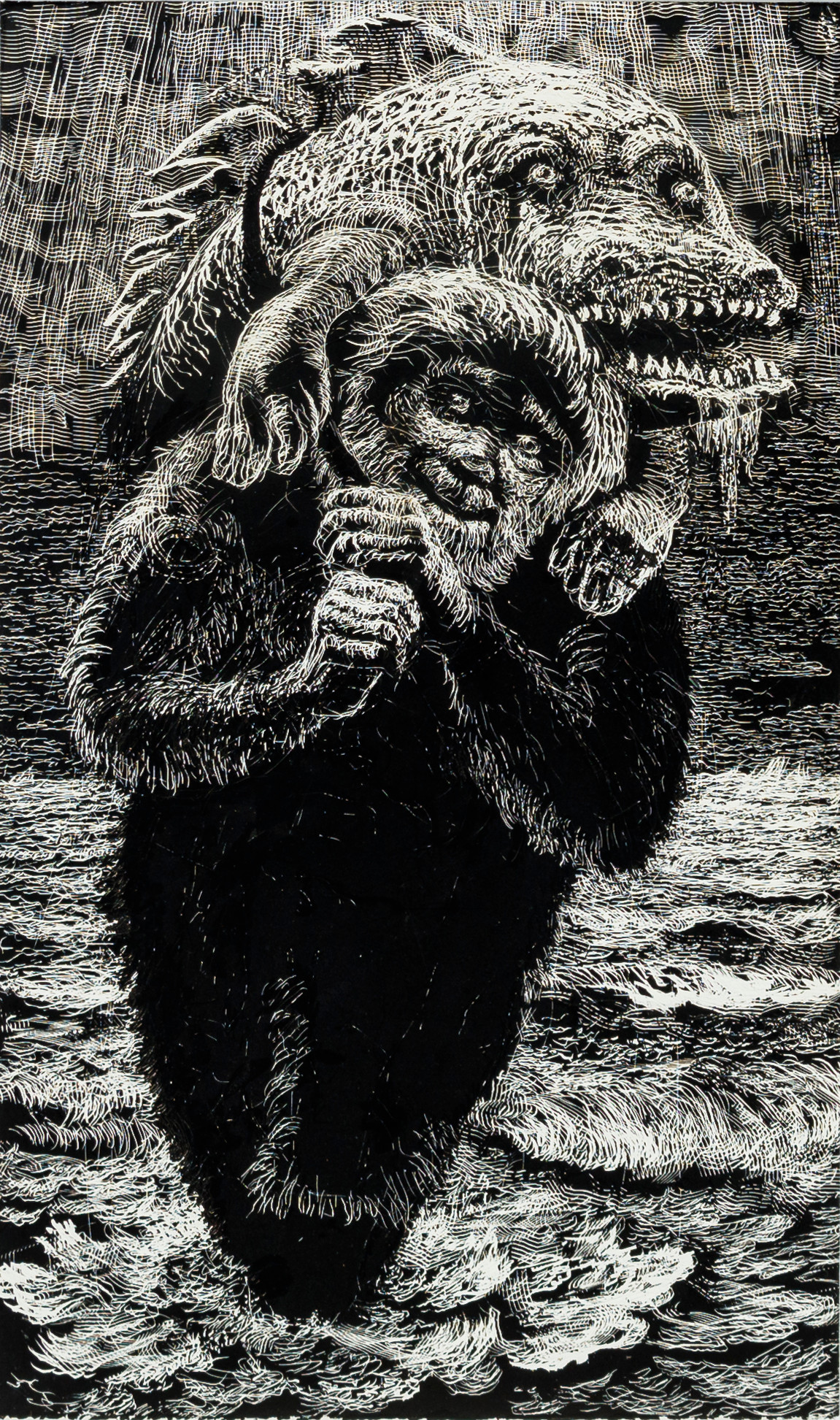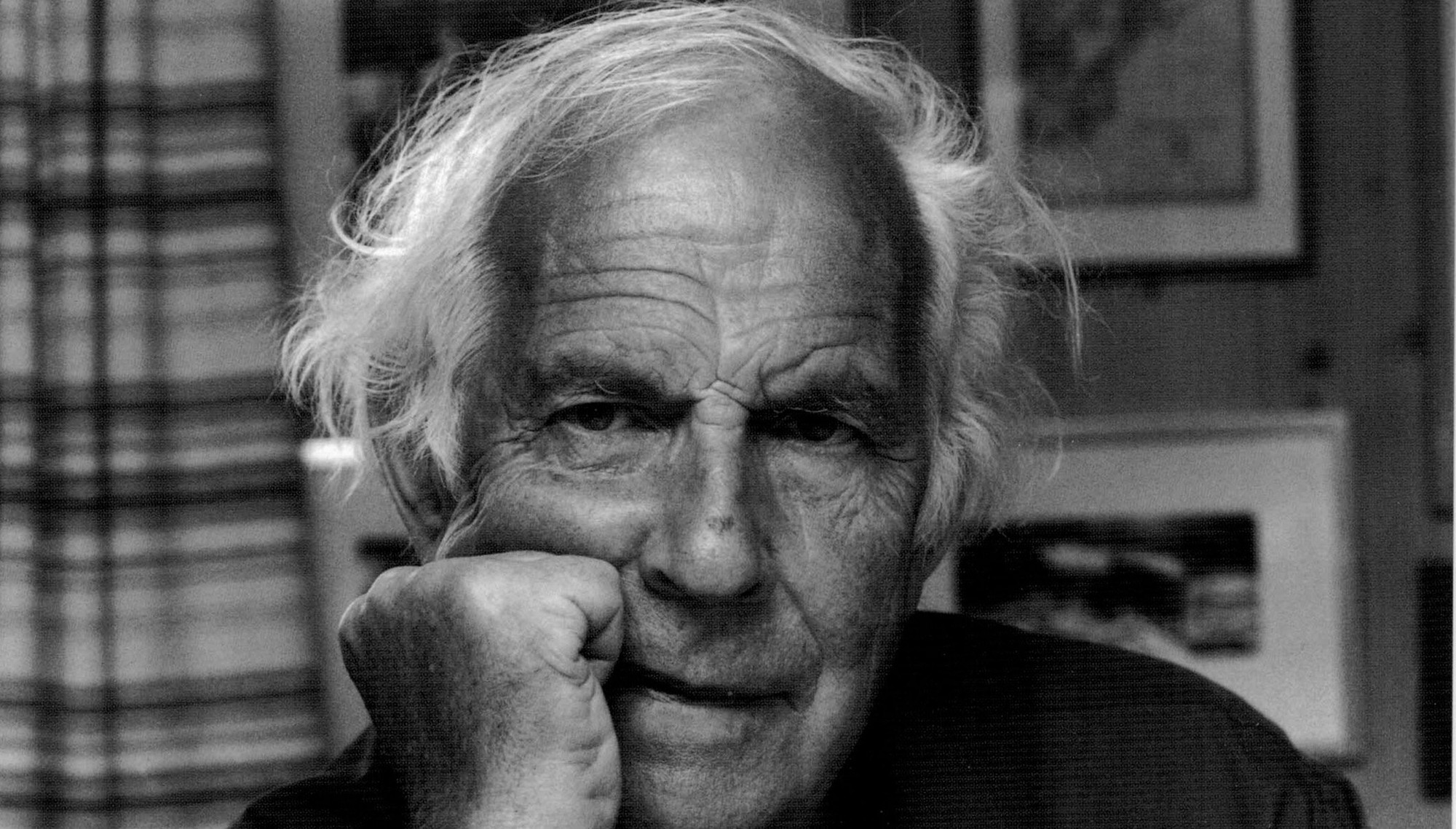Kaare Espolin Johnson (1907-1994) & The Espolin Gallery, Museum Nord

Introduction by Valentinas Klimasauskas, curator of “Ocean Eyes”
Between various inspirations of the concept of the festival “Ocean Eyes” is an image of “Sea Troll” (1967) by artist Kaare Espolin Johnson. Somewhat rough and open-to-various interpretations, the image depicts the possibility of the relationship between what may be called (more than) human (fisherman), imaginary (a chthonic sea troll) and nature (fish/ocean/wildness/unknown). At a certain point in his life, the artist had a vision of minus 22 which deeply affected his vision but also his technique and style. In the biographical documentary about the artist’s life in the Espolin gallery, Johnson talks about the necessity of having a chthonic soul companion and the picture of the sea troll suggests a possible realization of this need.

The concept of the chthonic, or the underworld, is closely linked to the ocean in this part of the world. In many mythological traditions, the sea is seen as a gateway to other worlds, both above and below. As such, the festival will feature discussions and presentations that explore the connections between the ocean, the imaginary and the supernatural. Accordingly, the festival organizers have set their sights on embracing the physical, sociopolitical, fictional, and other expressions associated with the vast expanse of the ocean. The endeavour acknowledges the vital role the ocean plays, not only in the historical and everyday experiences of the enchanting Lofuotta/Láfot/Lofoten Islands but also on a global scale, impacting our entire planet.
There is a strong chance that “Sea Troll” by Kaare Espolin Johnson refers to non-extractive and non-reductionist relationships and collaboration between (more than) humans and the so-called nature. Thus, there is a possibility that contemporary art and culture, in general, may provide us with examples and ideas that more equal collaborations are imaginable and thus possible.
About the Artist
Our sincere gratitude to curator at the Espolin Gallery, Malin Nyheim Overholth and Division Director of Museum Nord, Vågan, Svein Ingvoll Pedersen.
Kaare Espolin Johnson was born in 1907 in Surnadal, Møre og Romsdal. At the age of two the family moved to Finnmark, to Jarfjord and then to Vadsø. He showed artistic talent early on. His childhood years in Finnmark were followed by adolescence in Bodø before he attended the Norwegian National Academy of Crafts and Art Industry in Oslo.
Life as a poor and unknown artist was not easy in the 1930s. He took drawing assignments and sold individual work. It was through illustrations for a Norwegian magazine, Arbeidermagasinet for Alle, and as a book illustrator that he first found his audience.
Espolin Johnson had poor eyesight from childhood. In 1941 he lost sight in one eye and developed cataracts in the other. Thus, he saw few colors, and concentrated on lines and compositions, light and dark.
Espolin Johnson worked with a unique mixed media technique on paper, and with lithography and serigraphy. Particularly well known are his depictions of the coastal environment and the toil and dangerous lives of fishermen through generations. Central to his motives is man’s dependence on nature and the sea, and his struggle against the forces of nature.
Espolins motifs often use dramatic means in composition and technique, and a limited color palette where the play between light and dark is central. In other motifs, it is more interpersonal relationships that are portrayed in poetic depictions. Often with reference to his childhood in Finnmark, with experiences of the nature and light of the plateau and the many different people that were there. Landscapes and people moving toward the mythical realm also belong to his world of images.
But the experience of the Lofoten landscape and the forces of nature made a deep impact on Espolin. His first trip to Lofoten was in 1952, when he visited Svolvær and the island communities of Værøy and Røst. With view towards the special and mythical rock formation Trenyken, the artist studied rocks, erosions, shifts in light and movements in the sea. Traditional Nordland boats and fishing methods were also an inspiration. The fishermen’s tiring and dangerous lives through generations became strong motives.
Espolin Johnson was highly regarded in his day. He participated for several years in the National Art Exhibition Høstutstillingen, and several group exhibitions. He exhibited with organizations as Tegneforbundet and Norske Grafikere in Scandinavia and took part in exhibitions in USA and Yugoslavia. Espolin Johnson is represented in several collections in Norway, in the National Museum and in the Espolin Gallery, dedicated to the life and works of the artist.